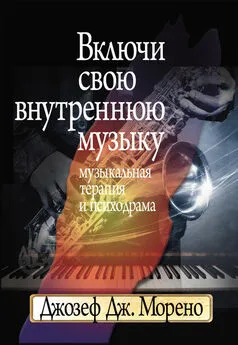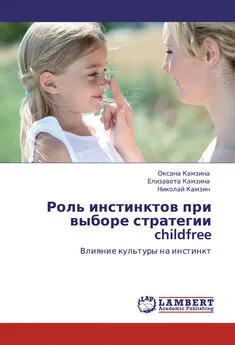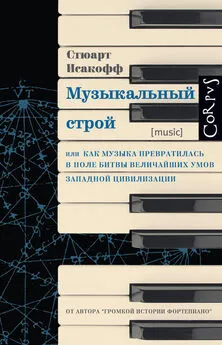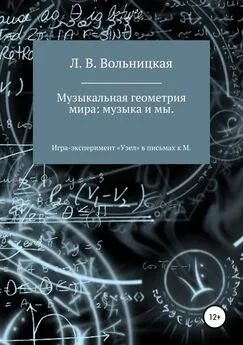Филип Болл - Музыкальный инстинкт. Почему мы любим музыку
- Название:Музыкальный инстинкт. Почему мы любим музыку
- Автор:
- Жанр:
- Издательство:Литагент 5 редакция
- Год:2021
- Город:Москва
- ISBN:978-5-04-113519-5
- Рейтинг:
- Избранное:Добавить в избранное
-
Отзывы:
-
Ваша оценка:
Филип Болл - Музыкальный инстинкт. Почему мы любим музыку краткое содержание
Музыкальный инстинкт. Почему мы любим музыку - читать онлайн бесплатно ознакомительный отрывок
Интервал:
Закладка:
Peretz, I. and Gagnon, L. ‘Dissociation between recognition and emotional judgements for melodies’, Neurocase 5, 21—30 (1999).
Peretz, I. and Hébert, S. ‘Towards a biological account of musical experience’, Brain & Cognition 42, 131—4 (2000).
Peretz, I. and Zatorre, R. (eds). The Cognitive Neuroscience of Music. Oxford University Press, Oxford, 2003.
Peretz, I., Radeau, M. and Arguin, M. ‘Two-way interactions between music and language: evidence from priming recognition of tune and lyrics in familiar songs’, Memory and Cognition 32, 142—52 (2004).
Perttu, D. ‘A quantitative study of chromaticism: changes observed in historical eras and individual composers’, Empirical Musicology Review 2 (2), 47—54 (2007).
Pesic, P. ‘Earthly music and cosmic harmony: Johannes Kepler’s interest in practical music, especially Orlando di Lasso’, Journal of Seventeenth Century Music 11 (2005).
Plantinga, J. and Trainor, L. J. ‘Melody recognition by two-month-old infants’, Journal of the Acoustical Society of America Express Letters 125, E58–E62 (2009).
Plomp, R. and Levelt, W. J. M. ‘Tonal consonance and critical band width’, Journal of the American Acoustical Society 38, 548—60 (1965).
Poulin-Charronnat, B., Bigand, E. and Koelsch, S. ‘Processing of musical syntax tonic versus subdominant: an event-related potential study’, Journal of Cognitive Science 18, 1545—54 (2006).
Raffman, D. Language, Music and Mind. MIT Press, Cambridge, Ma., 1993.
Ratner, L. G. Classic Music: Expression, Form and Style. Schirmer, New York, 1980.
Rauscher, F. H., Shaw, G. L. and Ky, K. N. ‘Music and spatial task performance’, Nature 365, 611 (1993).
Rauscher, F. H., Shaw, G. L. and Ky, K. N. ‘Listening to Mozart enhances spatial-temporal reasoning: towards a neurophysiological basis’, Neuroscience Letters 185, 44—7 (1995).
Read, G. Musical Notation. Gollancz, London, 1974.
Révész, G. Introduction to the Psychology of Music. Dover, New York, 2001.
Rifkin, D. ‘Making it modern: chromaticism and phrase structure in 20th-century tonal music’, Theory and Practice 31, 133—58 (2006).
Rifkin, D. ‘A theory of motives for Prokofiev’s music’, Music Theory Spectrum 26, 265—90 (2004).
Robinson, J. (ed.) Music and Meaning. Cornell University Press, Ithaca, NY, 1997.
Rohrmeier, M. and Cross, I. ‘Statistical properties of harmony in Bach’s chorales’, in Proceedings of the 10th International Conference on Music Perception and Cognition (ICMPC2008). Sapporo, Japan, 2008.
Rosen, C. Schoenberg. Fontana, London, 1976.
Ross, A. The Rest Is Noise. Fourth Estate, London, 2008.
Rothstein, E. Emblems of the Mind. Harper, New York, 1996.
Sachs, C. Our Musical Heritage. Prentice-Hall, New York, 1948.
Sacks, O. Musicophilia. Picador, London, 2007.
Saffran, J. R., Johnson, E. K., Aslin, R. N. and Newport, E. L. ‘Statistical learning of tone sequences by human infants and adults’, Cognition 70, 27—52 (1999).
Sakai, K., Hikosaka, O., Miyauchi, S., Takino, R., Tamada, T., Kobayashi Iwata, N., and Nielsen, M., ‘Neural representation of a rhythm depends on its interval ratio’, Journal of Neuroscience 19, 10074—81 (1999).
Samplaski, A. ‘Comment on Daniel Perttu’s “A quantitative study of chromaticism”’, Empirical Musicology Review 2 (2), 55—60 (2007).
Schellenberg, E. G. ‘Music lessons enhance IQ’, Psychological Scienc 15, 511—14 (2004).
Schellenberg, E. G. ‘Music and cognitive abilities’, Current Directions in Psychological Science 14, 317—20 (2005).
Schellenberg, E. G. ‘Long-term positive associations between music lessons and IQ’, Journal of Educational Psychology 98, 457—68 (2006).
Schellenberg, E. G., Bigand, E., Poulin, B., Garnier, C. and Stevens, C. ‘Children’s implicit knowledge of harmony in Western music’, Developmental Science 8, 551—6 (2005).
Schellenberg, E. G. and Hallam, S. ‘Music Listening and cognitive abilities in 10- and 11-year-olds: the Blur effect’, Annals of the New York Academy of Sciences 1060, 202—9 (2005).
Schellenberg, E. G. and Trehub, S. E. ‘Natural musical intervals: evidence from infant listeners’, Psychological Science 7, 272—7 (1996).
Schoenberg, A. Fundamentals of Musical Composition, ed. G. Strang and L. Stein. Faber & Faber, London, 1982.
Scruton, R. The Aesthetics of Music. Clarendon Press, Oxford, 1997.
Sessions, R. The Musical Experience of Composer, Performer, Listener. Princeton University Press, Princeton, 1950.
Sethares, W. A. ‘Adaptive tunings for musical scales’, Journal of the Acoustical Society of America 96, 10—18 (1994).
Sethares, W. A. ‘Real-time adaptive tunings using Max’, Journal of New Music Research 31, 347—55 (2002).
Sethares, W. A. Tuning Timbre Spectrum Scale, 2nd edn. Springer, Berlin, 2004.
Shepherd, J., Virden, P., Vulliamy, G. and Wishart, T. (eds). Whose Music? A Sociology of Musical Languages. Latimer, London, 1977.
Slevc, L. R., Rosenberg, J. C. and Patel, A. D. ‘Making psycholinguistics musical: self-paced reading time evidence for shared processing of linguistic and musical syntax’, Psychonomic Bulletin and Review 16, 374—81(2009).
Sloboda, J. A. ‘The uses of space in music notation’, Visible Language 25, 86—110 (1981).
Sloboda, J. A. The Musical Mind: The Cognitive Psychology of Music. Clarendon Press, Oxford, 1985.
Sloboda, J. A. (ed.) Generative Processes in Music, Oxford University Press, Oxford, 1988.
Sloboda, J. A. and Lehmann, A. C. ‘Tracking performance correlates of changes in perceived intensity of emotion during different interpretations of a Chopin piano prelude’, Music Perception 19, 87—120 (2001).
Sloboda, J. A. ‘Music structure and emotional response: some empirical findings’, Psychology of Music 19, 110—20 (1991).
Sloboda, J. Exploring the Musical Mind. Oxford University Press, Oxford, 2005.
Sluming, V. A. and Manning, J. T. ‘Second to fourth digit ratio in elite musicians: evidence for musical ability as an honest signal of male fitness’, Evolution and Human Behavior 21, 1—9 (2000).
Smith, J. and Wolfe, J. ‘Vowel-pitch matching in Wagner’s operas: implications for intelligibility and ease of singing’, Journal of the Acoustical Society of America 125, EL196–EL201 (2009).
Smith, N. A. and Cuddy, L. L. ‘Perceptions of musical dimensions in Beethoven’s Waldstein sonata: an application of tonal pitch space theory’, Musicae Scientiae 7.1, 7—34 (2003).
Spector, L. and Alpern, A. ‘Criticism, culture, and the automatic generation of artworks’, in Proceedings of the Twelfth National Conference on Artificial Intelligence, AAAI‐94, pp. 3—8. AAAI Press/MIT Press, Menlo Park, Ca. and Cambridge, Ma. 1994.
Steedman, M. J. ‘The perception of musical rhythm and metre’, Perception 6, 555—69 (1977).
Stewart, L., von Kriegstein, K., Warren, J. D. and Griffiths, T. D. ‘Music and the brain: disorders of musical listening’, Brain 129, 2533—53 (2006).
Storr, A. Music and the Mind. Collins, London, 1992.
Stravinsky, I. Poetics of Music in the Form of Six Lessons, transl. A. Knodel and I. Dahl. Harvard University Press, Cambridge, Ma., 1947.
Strong, G. (ed.) Fundamentals of Music Composition. St Martin’s Press, London, 1967.
Stubbs, D. Fear of Music. Zero Books, Ropley Hants., 2009.
Sundberg, J. (ed.) Gluing Tones: Grouping in Music Composition, Performance and Listening. Royal Swedish Academy of Music, Taberg, 1992.
Sundberg, J. and Lindblom, B. ‘Generative theories in language and music descriptions’, Cognition 4, 99—122 (1976).
Tagg, P. ‘Analysing popular music: theory, method and practice’, Popular Music 2, 37—65 (1982).
Temperley, D. ‘Syncopation in rock: a perceptual perspective’, Popular Music 18, 19—40 (1999).
Temperley, D. The Cognition of Basic Musical Structures. MIT Press, Cambridge, Ma., 2001.
Thompson, W. ‘From sounds to music: the contextualizations of pitch’, Music Perception 21, 431—56 (2004).
Tillmann, B., Janata, P. and Bharucha, J. J. ‘Activation of the inferior frontal cortex in musical priming’, Cognitive Brain Research 16, 145—61 (2003).
Tillmann, B. and Bigand, E. ‘Does formal musical structure affect perception of musical expressiveness?’, Psychology of Music 24, 3—17 (1996).
Timmers, R. and Ashley, R. ‘Emotional ornamentation in performances of a Handel sonata’, Music Perception 25, 117—34 (2007).
Trainor, L. J. ‘The neural roots of music’, Nature 453, 598—99 (2008).
Trainor, L. J. and Heinmiller, B. M. ‘The development of evaluative responses to music: infants prefer to listen to consonance over dissonance’, Infant Behavior and Development 21, 77—88 (1998).
Trainor, L. J. and Trehub, S. E. ‘A comparison of infants’ and adults’ sensitivity to Western musical structure’, Journal of Experimental Psychology: Human Perception and Performance 18, 394—402 (1992).
Trainor, L. J. and Trehub, S. E. ‘Musical context effects in infants and adults: key distance’, Journal of Experimental Psychology: Human Perception and Performance 19, 615—26 (1993).
Trainor, L. J. and Trehub, S. E. ‘Key membership and implied harmony in Western tonal music: developmental perspectives’, Perception and Psychophysics 56, 125—32 (1994).
Trainor, L. J., Tsang, C. D. and Cheung, V. H. W. ‘Preference for consonance in 2-month-old infants’, Music Perception 20, 185—192 (2002).
Trehub, S. E., Thorpe, L. A. and Trainor, L. J. ‘Infants’ perception of good and bad melodies’, Psychomusicology 9, 5—19 (1990).
Trehub, S. E., Schellenberg, E. G. and Kamenetsky, S. B. ‘Infants’ and adults’ perception of scale structure’, Journal of Experimental Psychology: Human Perception and Performance 25, 965—75 (1999).
Trehub, S. E. ‘The developmental origins of musicality’, Nature Neuroscience 6, 669 (2003).
Van den Toorn, P. C. The Music of Igor Stravinsky. Yale University Press, New Haven, 1983.
Wallin, N. L., Merker, B. and Brown, S. (eds). The Origins of Music.
MIT Press, Cambridge, Ma., 2000.
Walser, R. Running with the Devil: Power, Gender and Madness in Heavy Metal Music. Wesleyan University Press, Hanover, NH, 1993.
Warren, J., ‘How does the brain process music?’, Clinical Medicine 8, 32—6 (2008).
Waterman, M. ‘Emotional responses to music: implicit and explicit effects in listeners and performers’, Psychology of Music 24, 53—67 (1996).
Weber, M. The Rational and Social Foundations of Music, transl. D. Martindale, G. Neuwirth and J. Riedel. Southern Illinois University Press, Carbondale, Ill., 1958.
White, B. ‘Recognition of distorted melodies’, American Journal of Psychology 73, 100—7 (1960).
Winkler, I., Haden, G., Ladinig, O., Sziller, I. and Honing, H. ‘Newborn infants detect the beat in music’, Proceedings of the National Academy of Sciences USA 106, 2468—71 (2009).
Zajonc, R. B. ‘On the primacy of affect’, American Psychologist 39, 117—23 (1984).
Zatorre, R. J. and Peretz, I. (eds), ‘The Biological Foundations of Music’, Annals of the New York Academy of Sciences 930 (2001).
Zatorre, R. J., Chen, J. L. and Penhune, V. B. ‘When the brain plays music: auditory-motor interactions in music perception and production’, Nature Reviews Neuroscience 8, 547—58 (2007).
Zbikowski, L. M. Conceptualizing Music: Cognitive Structure, Theory and Analysis. Oxford University Press, Oxford, 2002.
Zentner, M. and Kagan, J. ‘Perception of music by infants’, Nature 383, 29 (1996)
Читать дальшеИнтервал:
Закладка:










